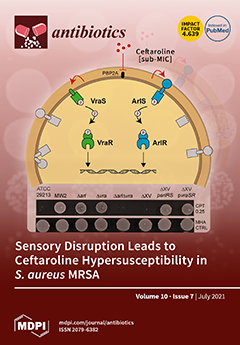Antimicrobials are frequently inappropriately prescribed for the management of upper respiratory tract infections (URTIs); therefore, the frequency of antibiotic prescriptions for patients with viral URTIs was assessed in this study. A cross-sectional study, including ambulatory patients diagnosed with viral URTI, was conducted, and
[...] Read more.
Antimicrobials are frequently inappropriately prescribed for the management of upper respiratory tract infections (URTIs); therefore, the frequency of antibiotic prescriptions for patients with viral URTIs was assessed in this study. A cross-sectional study, including ambulatory patients diagnosed with viral URTI, was conducted, and records of antimicrobial prescriptions were obtained. Sociodemographic, clinical (diagnostic), and pharmacological (antimicrobial) variables were assessed. Through multivariate analysis, variables associated with the use of antibiotics for viral infections were identified. A total of 341,182 patients with viral URTIs were identified. The patients, who were from 26 different departments of Colombia, had a mean age of 29.7 ± 23.5 years and a female predominance of 58.7% (
n = 200,195). The most frequent viral infections were as follows: acute rhinopharyngitis (common cold) (
n = 206,211; 60.4%); unspecified acute tonsillitis (
n = 27,432; 8.0%); and acute pharyngitis (
n = 26,411; 7.7%). A total of 24.8% of the patients (
n = 84,453) received a prescription for antibiotics, predominantly penicillins (
n = 61,871; 18.1%) and cephalosporins (
n = 10,926; 3.2%). Patients treated in Atlántico, Valle, and Risaralda departments, along with those older than 5 years, were more likely to receive antibiotics for the treatment of viral infections. Antibiotics are frequently prescribed for the management of URTIs, which is considered an inappropriate practice due to a lack of clinical benefits, increased generation of antimicrobial resistance, and a risk of adverse reactions due to the use of medications that patients do not require. Drug utilization studies are a great tool for monitoring how antibiotics are being used and planning interventions to improve their use.
Full article






